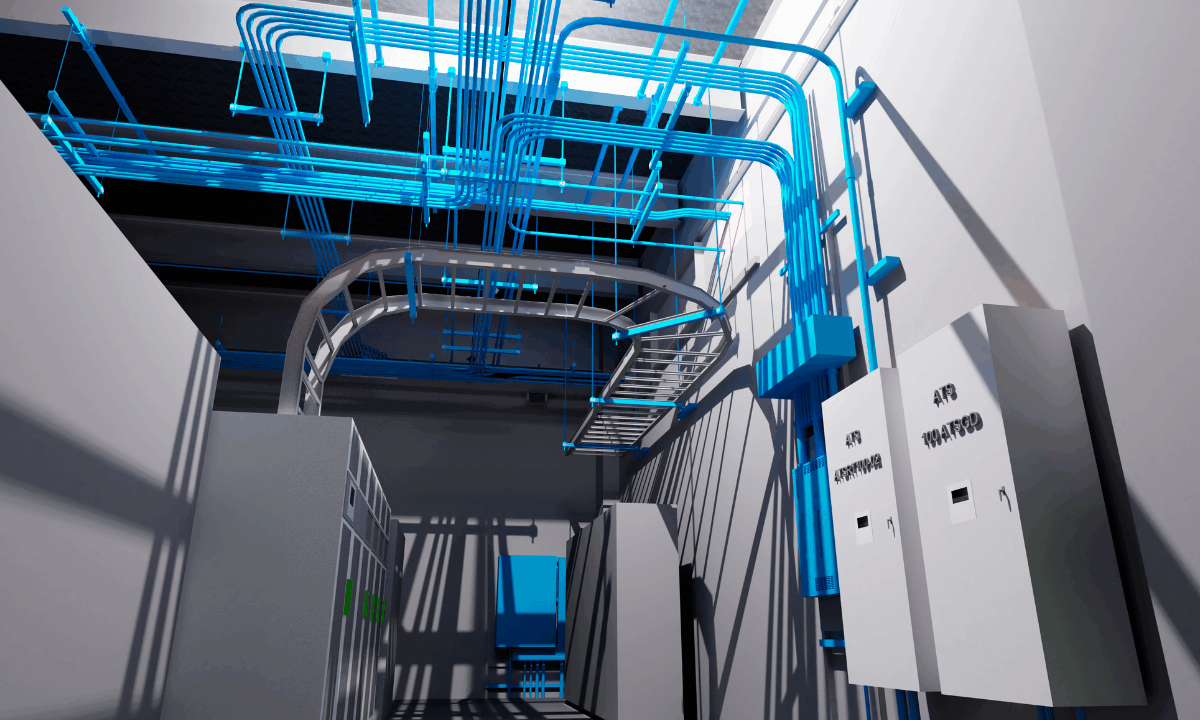Demand for U.S. construction is healthy, growing 10% between 2016 and 2018, and now reaching $10 trillion in construction related goods and services globally (a staggering 13% of the world’s GDP) and $1.2 trillion in the U.S. Yet it’s an industry at a crossroads.
Consider these statistics:
- 70% of contractors cited trouble finding skilled craft workers; 65% think it will not improve and could get worse.
- More than half of large projects are delayed past their scheduled completion date, with more than two-thirds over budget.
- MEP systems (lighting, power, lifts, plumbing, HVAC) now account for 40% of build costs. Their complexity has overwhelmed project management and ongoing building operations.
- Industry executives cite rework and waste for as much as 30% of project cost – that equates to $360 million of the $1.2 trillion spend in the U.S.
- In 2015, a KPMG survey of project owners found that just 32% had a “high level of trust” in their contractors.
To address these issues, the historically conservative construction industry is embracing new digital technologies from 3D printing to LIDAR-equipped robots to monitor progress. The first wave of digitization, including BIM software, has already demonstrated full project cost reductions of 5-7%, with even more dramatic savings expected as the sophistication of technology increases.
Digital tech rarely stops at bits alone
In industry after industry, from retail to transportation to manufacturing, changes made by digital technology rarely stop at bits alone. Digitization has unleashed five separate forces of change on the construction industry, each of which will drive significant disruption and relentless change to industry structure. These five forces set the stage for progressive, forward-thinking companies to grab market share while more conservative players stumble. The data captured by simple digitization of paper processes in the construction industry is driving a dramatic transformation from activities as far downstream as the selection of materials, to installation of ever more complex systems.
Five forces disrupting construction
- BIM. The growth of BIM is accelerating, yet today disconnected islands of data models are resulting in colossal rework, duplication of activities and untapped data. Analysts and general contractors at the 2018 BiLT conference commented that 90-95% of architects’ BIM models are discarded and redone. Similarly, facility managers today rarely run their buildings based on construction BIM data models, but rather only selectively import some of the rich data locked up in BIM models into unintegrated building management systems. The opportunity is clear. Companies that design constructible BIM data models and those that use the rich data of construction BIM models to run smarter buildings will profit.
- Modular manufacturing. Modular (pre-fab, off-site, etc.) manufacturing is rapidly growing thanks to digital tools that facilitate coordination between architects, engineers, factory and site. According to a 2015 study, factory construction delivers savings averaging 16% of project costs and reduces time to completion by 45%. Modular construction also relieves many of the industry’s labor and skills bottlenecks. Fewer workers are needed to complete tasks, and those workers execute one quarter the change orders and suffer less than 10% of the workplace injuries of conventional construction. Modular build start-up Katerra is integrating all facets of project development and design-build with off-site manufacturing to underbid competitors, reaching just shy of $4 billion in bookings in its third year of operation, promising both lower costs and faster delivery.
- Materials and systems. While steel and lumber have historically ruled construction, materials such as cross laminated timber (CLT) increase design flexibility and improve building envelope efficiency and are now replacing steel and concrete in high-rise buildings. The use of CLT, factory-cut according to digital specifications, is growing at a stunning rate of 15% annually and now commands global revenue of nearly $1 billion. These same digital modelling techniques can also be applied to entire systems including complex HVAC, elevators, fire, security, lighting and power. IoT sensors are now factory assembled as modules, requiring only dozens of on-site joints or connections, instead of thousands.
- Post-construction management. By linking energy analysis tools with BIM, architects and engineers are able to harness data on weather, exposure and building utilization to reduce the cost of powering finished projects by 15%. Incorporation of digital sensors and advanced algorithms to monitor HVAC, occupancy and lighting systems reduce power use even more dramatically, by up to 50%. BIM plans can furthermore become “living” documents, transferred to facilities management who use them to plan preventative maintenance and remodel the outcomes of retrofits or building systems improvements.
- Market movers. Realtors and brokers have held a protected status in real estate for over a century, serving as caretakers of market knowledge. Digital marketing tools, however, enable project owners to place properties with consumers directly, even updating floor plans in real time to match market demand. Real estate startup OpenDoor is already responsible for 3% of all home sales in Phoenix and Dallas, buying homes sight-unseen based on customer-supplied information and their data analytics, repairing them in under two weeks before flipping them successfully on the market. In another example, WeWork is now the second largest lessor in Manhattan and continues rapid growth.
Today’s construction companies face challenges with cost and schedule management, labor sourcing and matching supply to demand—all of which are being addressed by a fresh generation of disruptive insurgents. Experience from digitization in other industries shows that digitally-empowered companies will lead the scope and shape of the construction industry’s future.
Less than half of today’s market will be retained by today’s incumbents. The massive restructuring that digitization brings to industry after industry creates opportunity – for every company that loses market share, others will win and prosper. Aggressive companies that master innovation will be able to expand many times faster than the typical organic growth of 3-5% per year.







